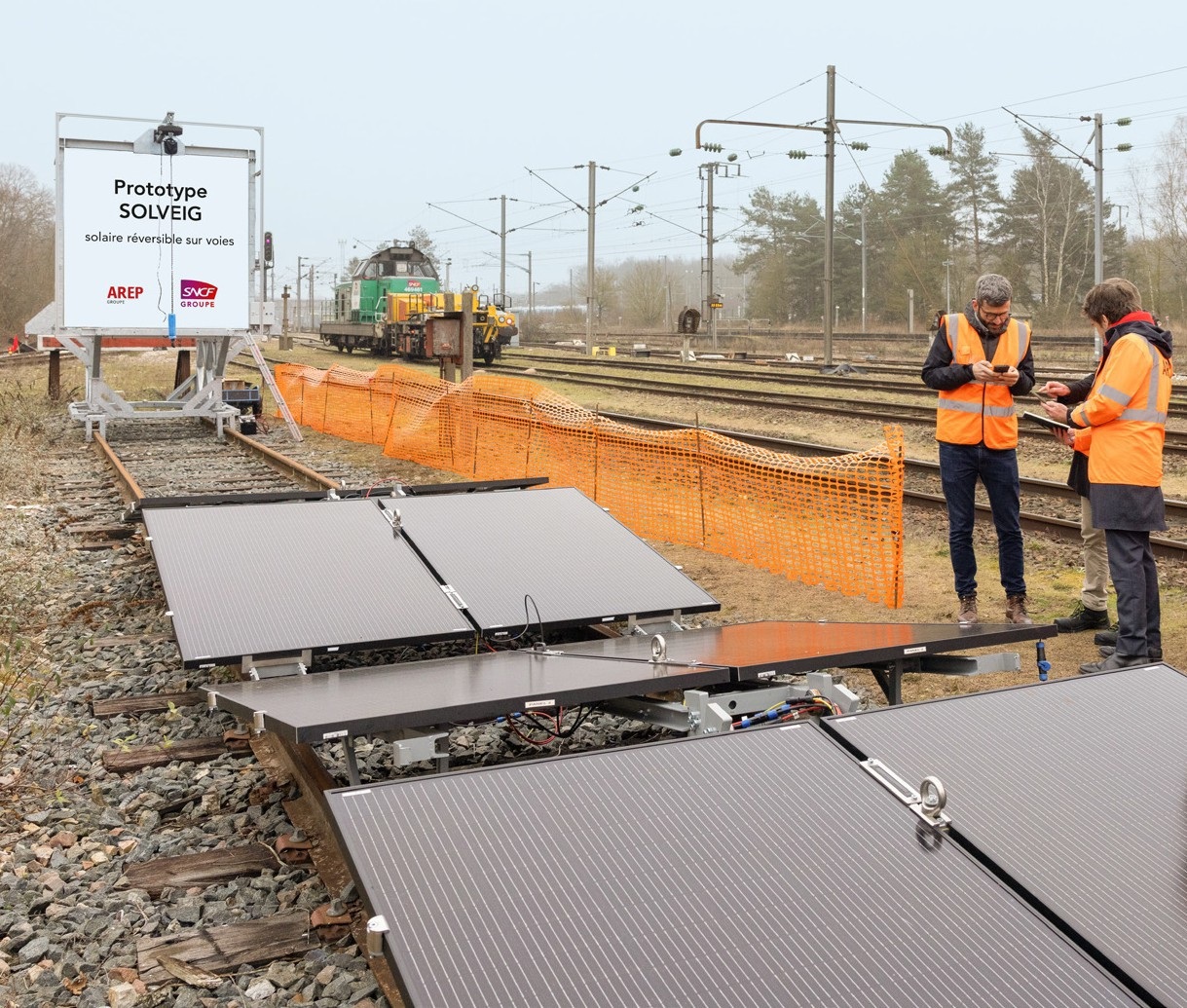SNCF Group has announced an innovative experiment under its “ferrovoltaic” initiative, aimed at integrating renewable energy systems within the rail ecosystem. The SOLVEIG system is a reversible solar panel deployment solution designed to harness solar energy on unused railway lines while minimizing environmental impact.

AREP, a 100% subsidiary of SNCF Gares & Connexions specializing in architecture, urban planning, and engineering, is spearheading the development of solutions to deploy renewable energy within constrained land-use contexts. As part of this effort, the SOLVEIG prototype represents a key milestone in SNCF’s ambition to install 1,000 MWp of photovoltaic capacity by 2030. This is part of a broader strategy to meet the electricity demands of the SNCF network, where 80% of national trains already operate on electricity.
Named after the Scandinavian “paths of the sun,” the SOLVEIG system seeks to optimize solar potential on disused rail lines while maintaining a low environmental footprint. The system enables temporary, foundation-free solar energy generation using lightweight, modular components transported via ISO containers.
SOLVEIG six-month trial at Achères
Starting January 17, 2025, the SOLVEIG prototype will undergo a six-month trial at SNCF’s Achères Technicenter in the Yvelines region. This test will evaluate the system’s performance under the unique conditions of the rail environment. If successful, the solution could be deployed on a larger scale across non-operational lines, identified through a solar mapping project led by AREP. These installations could power localized renewable energy needs, such as maintenance operations.
SOLVEIG is part of SNCF’s broader initiatives to integrate renewable energy, including projects like solar canopies, station shading, and platform shelters. All projects emphasize architectural and environmental integration while addressing ecological challenges.
This experiment aligns with SNCF’s sustainability goals and contributions to the United Nations Sustainable Development Goals (SDGs), particularly those focused on clean energy, sustainable infrastructure, and biodiversity conservation.
Share on:



